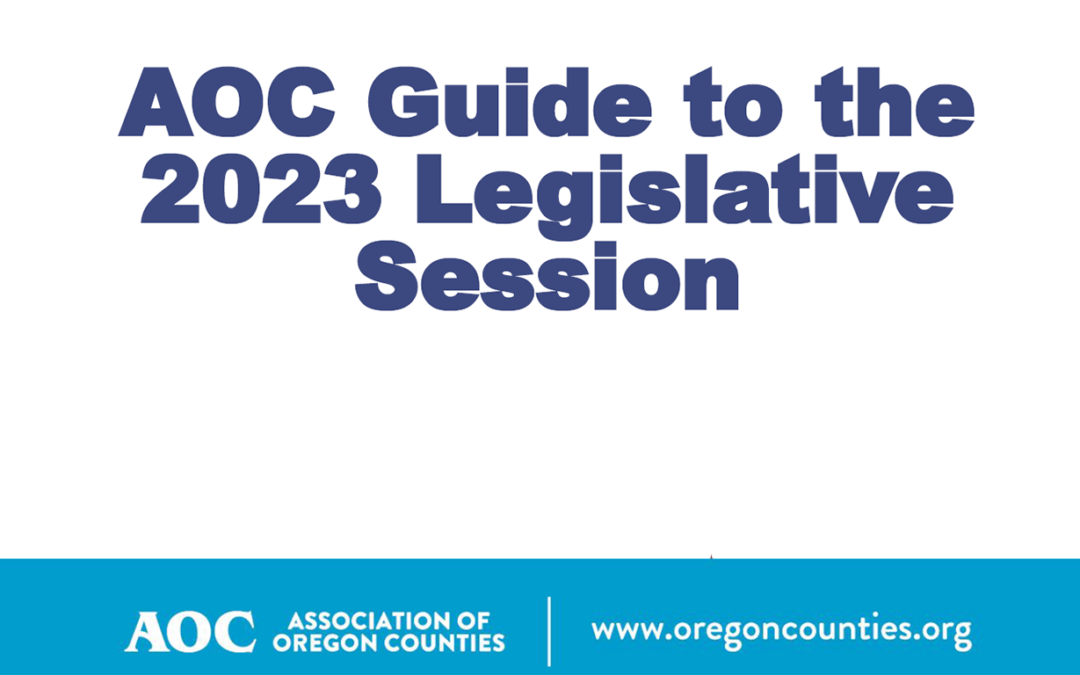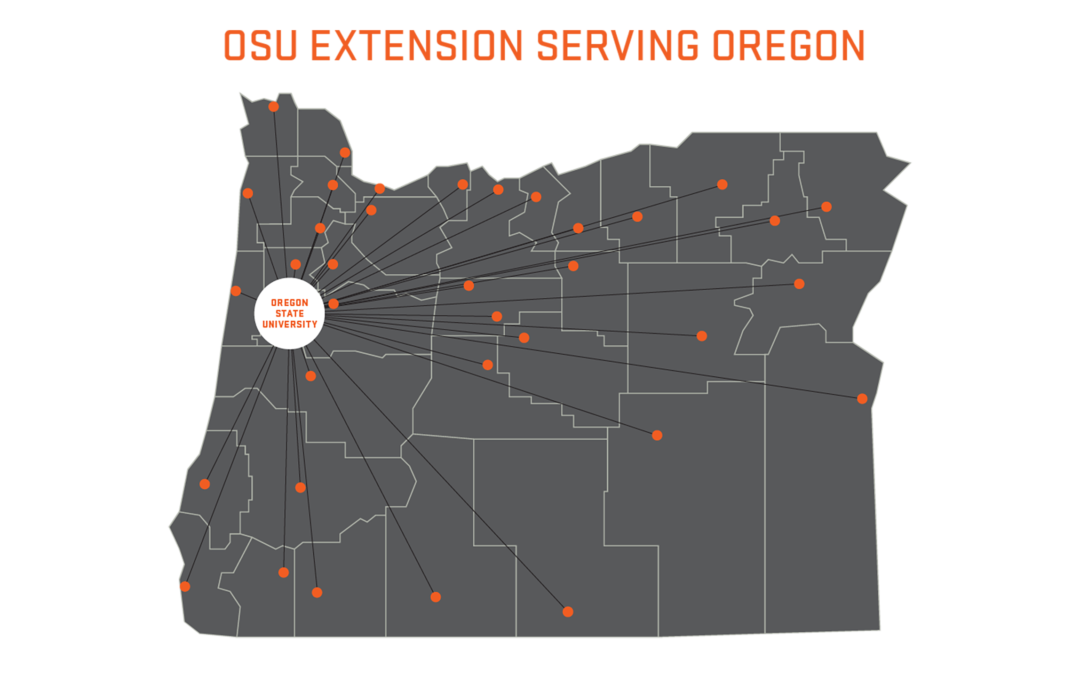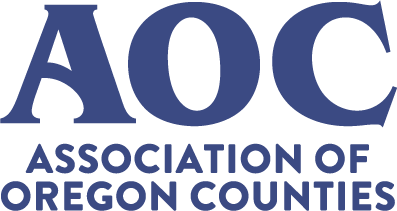
Jan 30, 2023 | AOC News
The 2023 Legislative Session is underway, and new bills continue to be introduced. Below are bills in the current billstack that the Association of Oregon Counties (AOC) legislative affairs team have identified as impacting AOC’s legislative priorities for the Session.
COMMUNITY DEVELOPMENT PRIORITY
Systemic Solutions to Statewide Housing Shortages – advocate for state investments that boost local government permit processing staff and capacity, and a fast-track process for limited urban growth boundary expansions that significantly increase affordable and workforce housing in all communities experiencing shortages of buildable land.
RELATED BILLS
- LC 2044 will be introduced by Representative Pam Marsh (D-Ashland) as part of a suite of bills aimed at this priority, this concept provides state investments in local government permitting staff capacity ($45 million), land use system education ($1.1 million), and creates regional housing coordinators ($3.6 million).
GOVERNANCE & REVENUE PRIORITY
Support adequate funding of county assessment and taxation services.
RELATED BILLS
- HB 2088 is meant to provide sustainable funding for assessment and taxation services. Historically, the state has provided about 33 percent of the funding, but after 2007, the state’s share has been reduced to around 12 percent. HB 2088 holds back three percent from all taxing districts to pay counties for their assessment and taxation funding. The bill as written is not expected to move, but a workgroup convened by the committee chair will be meeting to address the structural funding deficit. On Jan. 25, the House Committee on Revenue heard HB 2088. AOC President Derrick DeGroot testified on behalf of AOC and spoke strongly in favor of the concept and offered support from AOC for any work that results in sustainable funding for the counties assessment and taxation services.
HEALTH & HUMAN SERVICES PRIORITY
End liability risk shift to counties and local system providers for mandated populations (aid and assist, civil commitment, and guilty except for insanity).
- SB 319 provides that a person who contracts with a public body to provide services for purposes of community restoration or to restore fitness to proceed is a state officer, employee, or agent for purposes of indemnification under Oregon Tort Claims Act. This concept, filed by Senator Floyd Prozanski (D-Eugene) as a Senate Judiciary Committee bill, is a safety line for community providers and counties while longer term solutions are crafted and put in place. It is supported by a coalition including the Oregon Trial Lawyers Association; Disability Rights Oregon; NAMI Oregon; Oregon AFSCME; Oregon Council for Behavioral Health; the Association of Oregon Community Mental Health Programs; Clackamas, Lane, Multnomah and Washington counties; and the Association of Oregon Counties.
NATURAL RESOURCES PRIORITY
Enhance county role across the natural resources – protect and enhance county funding and flexibility to support management policies and locally focused policy making processes for wildfire resiliency efforts, place-based planning efforts, and drought resiliency, as well as sound land management.
- SB 80 is a wildfire placeholder bill. The concept should include the resources and capacity necessary for counties to implement the wildfire preparation, mitigation, and defense measures in SB 762 (2021) on an ongoing basis.
- LC 3292 is a water planning concept by Representatives Ken Helm (D-Beaverton) and Mark Owens (R-Crane). The concept will lift the sunset on place-based water planning and allocate funding to the Oregon Water Resources Department.
- LC 1895 is a drought resilience concept. This forthcoming package by Representatives Ken Helm (D-Beaverton) and Mark Owens (R-Crane) will help address drought resiliency and support efforts to mitigate this persistent issue facing Oregon counties.
PUBLIC SAFETY PRIORITY
Increase state investments in district attorney salaries and address the widening pay gap between elected district attorneys.
- HB 2308/POP 101 provides for state funding for pay equity, the elimination of the two tiers ($1.5 million).
- HB 2311/POP 102 – provides for state funded increases in district attorney salaries ($3.48 million).
- HB 2392/POP 104 – provides for state funding for processing digital evidence and body cams ($14.4 million).
- HB 2391/POP 105 – provides for state funding for district attorney crime victim services ($25.5 million).
- LC 970/POP 106 – provides for state funding for indigent defense discovery ($6 million).
- POP 107 – provides for state funding for recording grand jury proceedings ($384,000).
TRANSPORTATION PRIORITY
Advocate for fair and sustainable funding to effectively and efficiently manage counties large and diverse road systems by:
Preserving the Surface Transportation Block Grant (STBG) State Fund Exchange Program
- HB 2101 is a Joint Committee on Transportation committee bill that would codify the STBG Fund Exchange program and create long term stability for the program. AOC is in negotiations with the Oregon Department of Transportation on an amendment.
Creating the statutory authority for counties to charge cost-recovery fees for permits issued to utilities for work in the county road right of way.
- SB 635 is chief co sponsored by Senator Lew Frederick (D-Portland) and Senator Lynn Findley (R-Vale), reintroduction of HB 3049 (2021)
ADDITIONAL AOC PRIORITY BILLS
- HB 2261 ensures that the 2.5 percent of dedicated video lottery proceeds reach Oregon counties and continues key investments in local economic development.
- SB 460 provides General Fund backfill for revenue losses from Ballot Measure 110 in the amount of $34.8 million to impacted counties ($34.8 million to cities)
The AOC legislative affairs team looks forward to ongoing conversations with Governor Tina Kotek and legislative leadership to strengthen the state-county partnership on critical services and functions for all Oregonians.
Contributed by: The AOC Legislative Affairs Team
- Anna Braun (503.901.7023), Contract Lobbyist, Governance, Revenue, & Veterans
- Michael Burdick (503.522.9743), AOC Legislative Affairs Manager Public Safety & Community Development
- Jessica Pratt (503.515.6884), AOC Legislative Affairs Manager Health & Human Services
- Branden Pursinger (503.320.3579), AOC Legislative Affairs Manager Natural Resources
- Brian Worley (503.810.9902), AOC County Road Program Director Transportation

Jan 26, 2023 | Public Safety & Veterans
When a person’s behavior causes concern for their welfare, they can be forced to enter a treatment facility in a process called civil commitment–even if they don’t pose an immediate danger to themselves or others. Civil commitment is a thorny issue because, on the one hand, communities have a responsibility of care; but on the other hand, communities must respect individuals’ rights and freedoms. Furthermore, individuals left to experience acute mental health crises without support may pose a danger to themselves or others, and compelling treatment may be a better option than leaving them unsupported.
Historically, there were many cases where the civil commitment process was abused, sometimes causing egregious harm. Those abuses led to reforms making the process much more difficult to pursue. Civil commitment is rarely used in Oregon, partly because of difficulty finding placement for those who may be in need. It has also been argued that the legal standard for civil commitment in Oregon may be higher than necessary.
Oregon’s outgoing chief justice, Martha Walters, established the Commitment to Change Workgroup last year, to grapple with these difficult questions. The workgroup includes representatives from the criminal justice system like judges, district attorneys, public defenders, and law enforcement. Also represented are legislators, local governments, and healthcare leaders such as the Association of Oregon Community Mental Health Programs, disability rights advocates, mental health and addiction care providers, and state agencies. There is currently an opening on the workgroup for someone to represent counties. Anyone interested in this opportunity should reach out to AOC Legislative Affairs Manager for Public Safety, Michael Burdick, for more details.
Contributed by: Michael Burdick | Legislative Affairs Manager

Jan 26, 2023 | Governance, Revenue, & Economic Development
Hours after being officially sworn in, Governor Tina Kotek signed three executive orders focused on housing and homelessness. One creates a new advisory board to develop recommendations for speeding up home construction enough to bring an end to our chronic housing shortage within 10 years. The council is supposed to issue its recommendations by the end of 2023.
The executive order creating the council doesn’t require that local governments be represented, but the governor’s office recently contacted the Association of Oregon Counties (AOC) to encourage its members to apply. Applications are being accepted now at this website; no deadline to apply has been announced.
Contributed by: Michael Burdick | Legislative Affairs Manager

Jan 24, 2023 | AOC Advocacy

Jan 23, 2023 | AOC News
The Association of Oregon Counties (AOC) is seeking the names of any members interested in representing AOC on the following committees:
- Public Transportation Advisory Committee (PTAC) – PTAC advises the Oregon Department of Transportation on public transportation issues across the state.
- One AOC representative position (previously two positions)
- Scenic Bikeways Advisory Committee – Proposed scenic bikeways are reviewed, rated, and recommended for designation by the Scenic Bikeway Advisory Committee. AOC County Road Program Director, Brian Worley serves as a non-voting staff member on the committee.
- One AOC representative position
Current AOC members who are interested in being appointed can email
sgamaney@oregoncounties.org with a statement of interest by
Monday, February 6 – close of business. All applicants will be reviewed by AOC President Derrick DeGroot for final recommendations.

Jan 20, 2023 | NACo
On December 23, 2022, the U.S. Congress enacted a Fiscal Year (FY) 2023 omnibus appropriations bill to fund the federal government through September 30, 2023. Enactment of the omnibus followed a series of Continuing Resolutions (CR) to fund the federal government and avert a government shutdown since the beginning of the federal fiscal year on October 1, 2022. President Biden signed the $1.7 trillion omnibus appropriations bill into law on December 29, 2022.
For the second year in a row, discretionary spending levels for FY 2023 were not limited by statutory spending caps prescribed by the Budget Control Act of 2011. As such, the White House, congressional leadership, and top appropriators negotiated topline spending levels over several months.
The FY 2023 omnibus includes several key investments of importance to counties detailed in this report. These include, but are not limited to, full funding for the Payments in Lieu of Taxes (PILT) program and significantly invests in the RECOMPETE pilot program and technology hubs authorized by the bipartisan CHIPS and Science Act. These programs and others funded by the bill, including a $550 million increase in wildland fire suppression, will enable counties to provide critical services and plan for economic sustainability and growth in 2023.
The final omnibus represents a total of $1.7 trillion in discretionary spending across all 12 spending bills. Of this total amount, $773 billion is in non-defense discretionary spending, an increase of 5.9 percent over the comparable FY 2022 level, and $858 billion is in defense discretionary spending, an increase of 9.7 percent.
In addition to regular programmatic funding and extensions, the FY 2023 omnibus included nearly $10 billion in earmarks (rebranded as community project funding and congressionally directed spending), representing 4,000 projects, for the first time in nearly a decade, although with increased transparency and guardrails. As a result, hundreds of county programs and critical infrastructure projects aimed to better serve communities will receive direct federal investments.
The omnibus bill delivers on many county priorities which are detailed in the National Association of Counties (NACo) report here. Notably, during consideration of the final omnibus agreement, the U.S. Senate adopted an amendment to the package offered by Sens. John Cornyn (R-Texas) and Alex Padilla (D-Calif.) the bipartisan State, Local, Tribal and Territorial Fiscal Recovery, Infrastructure and Disaster Relief Flexibility Act. This amendment grants additional flexibility to county governments in investing resources from the American Rescue Plan’s (ARPA) Coronavirus State and Local Fiscal Recovery Fund, including infrastructure, community development, and disaster response. It will also provide the U.S. Department of the Treasury with much-needed resources to assist counties in deploying recovery funds.
This analysis includes funding highlights for key programs impacting counties. Click here to view NACo’s analysis.
Click here for the original article.
Contributed by: The National Association of Counties

Jan 19, 2023 | AOC Business Partner
The Oregon State University (OSU) Extension Service partners with local communities, providing trusted expertise and science-based knowledge to respond to local needs, challenges, and opportunities.
Our work is as richly diverse as Oregon’s communities. We’re helping kids reach their full potential and expanding educational access through 4-H and other youth programs. We’re encouraging resilience across the food chain — from pollinator health to farm and ranch productivity. We’re supporting sustainable natural resource management and enhancing health and well-being for every stage of life.
Our mission, put simply, is to help every Oregonian thrive. Our relationship with Oregon counties is crucial to fulfilling that mission.
A strong partnership
OSU Extension has a presence in every Oregon county and the Confederated Tribes of Warm Springs.
Local governments provide important financial and advisory support, ensuring that our work is directed toward community priorities.
Twenty-six counties support Extension with voter-approved service districts or levies; nine others provide general fund allocations. Every $1 invested by counties in OSU Extension leverages $2 in state funding as well as federal, grant, and philanthropic funding. These county dollars directly support county needs, including facilities and local program support.
In January 2023, we were honored to again partner with the Association of Oregon Counties to offer County College. This biennial program provides a comprehensive overview for new commissioners, judges, chairs and high-level staff and opportunities to explore the strong partnership between counties and OSU Extension.
A look ahead
OSU Extension is one of three statewide OSU public service programs, along with the Oregon Agricultural Experiment Station and the Forest Research Laboratory. These programs, known as the OSU Statewides, receive a state funding allocation separate from the university’s general budget.
Guided by stakeholder input, in the 2023-25 biennium the OSU Statewides will seek $206 million in state legislative funding, which is a $50 million increase. This investment supports:
- Full base funding to sustain program and service levels.
- New funding to bolster capacity and expand programming to support resilient food systems, natural resources, and communities.
While Extension efforts are included in all aspects of the request, they are the centerpiece of the community resilience focus and will directly benefit rural and urban communities by:
- Expanding proven Extension programs to support agricultural production, and in turn, economic development.
- Strengthening our network of field-based educators who provide nutrition, mental health, and physical well-being programming.
- Supporting college and career access and expanding positive youth development programming.
- Building more sustainable urban environments and community food systems.
- Expanding existing, effective Extension community mental health promotion and substance use programming.
- Build capacity to provide applied research and evidence-based solutions to help communities mitigate detrimental health effects of houselessness and improve other health outcomes.
State funding is a critical complement to investment by counties in OSU Extension, and provides for delivery of statewide programming that is responsive to local needs.
We value, and depend on, the support and collaboration we receive from Oregon’s counties. And we look forward to what we will continue to accomplish together.
We invite you to learn more about how OSU Extension is serving Oregon: extension.oregonstate.edu/impact
Contributed by: Dr. Ivory W. Lyles | Vice Provost, Division of Extension and Engagement, Director, OSU Extension Service
*AOC Partner sponsored article.

Jan 19, 2023 | AOC Business Partner
In 1960, a group of six counties in Oregon saw the need to bring great health insurance coverage to their members. These leaders knew the advantage of pooling their dollars together to help keep costs down and purchase the best benefits for their members. In turn, the Association of Oregon Counties (AOC) formed the Association of Oregon Counties Insurance Trust (AOCIT).
Rooted in the same cause as the AOC, Regence has had the honor to provide great health insurance benefits to AOC members for more than four decades through our partnership with CIS Benefits.
Regence is committed to driving a simpler, personalized, and more affordable health care experience for the people and their families we serve. Our partnership with CIS Benefits allows us to offer an expansive network across Oregon to its members and help keep costs down. CIS Benefits allows AOC members to bundle their benefits together, achieve lower rates and save counties and their workers money on their health benefits. Since 2019, the average annual rate increases for CIS Benefits self-insured medical program for counties administered by Regence has been 3.33 percent for pooled groups with fewer than 100 employees.
This community-oriented approach to health care is a fundamental part of our health insurance. Regence was formed in a very similar way as the AOCIT a little more than 40 years earlier. A group of loggers wanted to find a way to pool resources together to help their fellow loggers. They knew even a minor injury could bankrupt a family. This group decided to form a community fund, this way medical costs could be shared by everyone. It was people helping people. A mission that hasn’t changed for Regence in our more than one-hundred-year history.
Regence is honored to continue our partnership with CIS Benefits and offer simple and affordable healthcare benefits to AOC members. Those Oregon counties looking to learn more about CIS Benefits administered by Regence can reach out to the CIS team at employeebenefits@cisoregon.org.
Contributed by: Angela Dowling | president, Regence BlueCross BlueShield of Oregon
*AOC Partner sponsored article.








